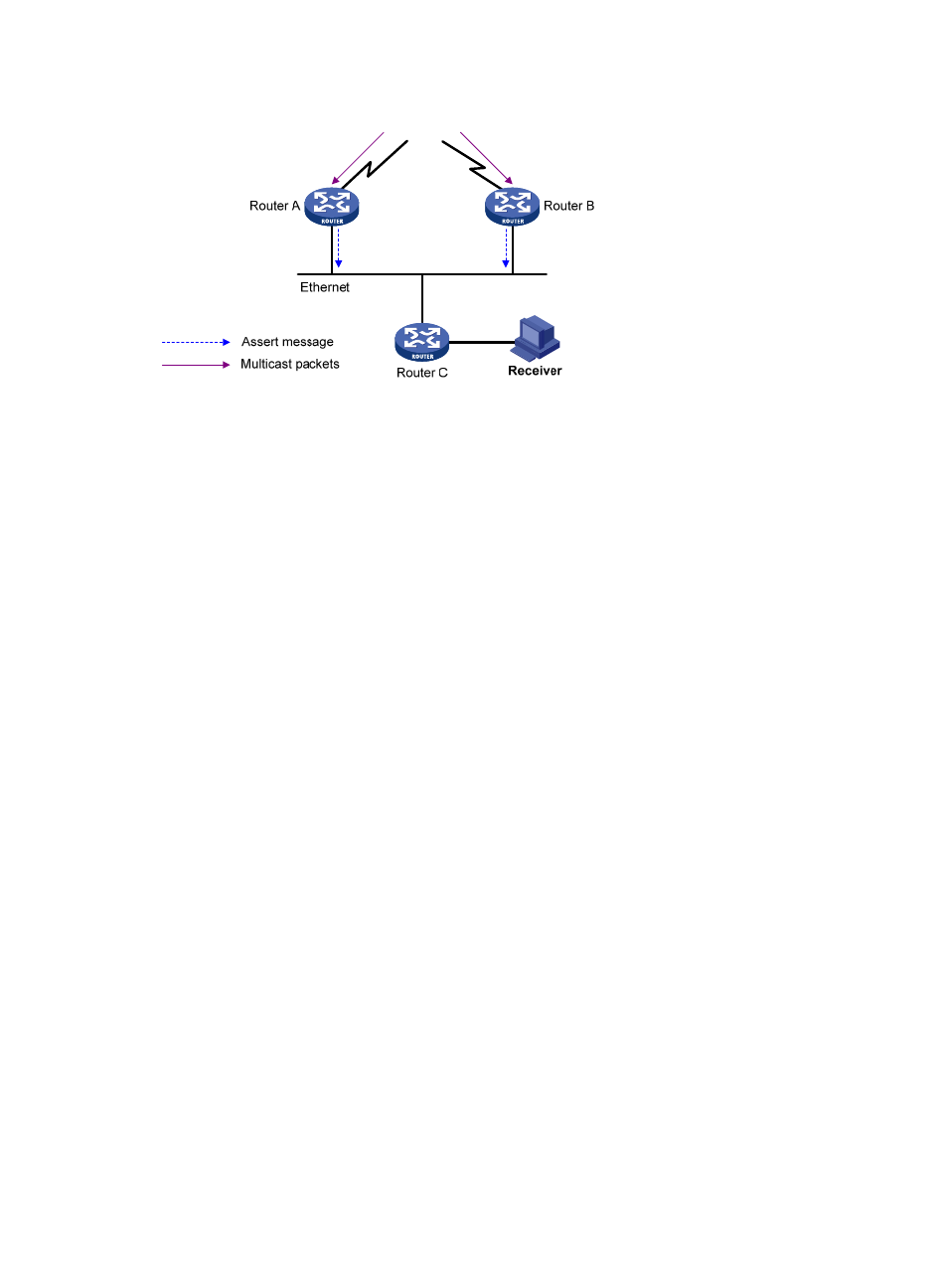Pim-sm overview – H3C Technologies H3C S10500 Series Switches User Manual
Page 144

129
Figure 41 Assert mechanism
As shown in
, after Router A and Router B receive an (S, G) packet from the upstream node, they
both forward the packet to the local subnet. As a result, the downstream node Router C receives two
identical multicast packets, and both Router A and Router B, on their own local interface, receive a
duplicate packet forwarded by the other. After detecting this condition, both routers send an assert
message to all PIM routers (224.0.0.13) on the local subnet through the interface on which the packet
was received. The assert message contains the multicast source address (S), the multicast group address
(G), and the preference and metric of the unicast route/MBGP route/multicast static route to the source.
By comparing these parameters, either Router A or Router B becomes the unique forwarder of the
subsequent (S, G) packets on the multi-access subnet. The comparison process is as follows:
1.
The router with a higher preference to the source wins;
2.
If both routers have the same preference to the source, the router with a smaller metric to the source
wins;
3.
If a tie exists in route metric to the source, the router with a higher IP address of the local interface
wins.
PIM-SM overview
PIM-DM uses the flood-and-prune principle to build SPTs for multicast data distribution. Although an SPT
has the shortest path, it is built with a low efficiency. Therefore, the PIM-DM mode is not suitable for large-
and medium-sized networks.
PIM-SM is a type of sparse mode multicast protocol. It uses the pull mode for multicast forwarding and is
suitable for large-sized and medium-sized networks with sparsely and widely distributed multicast group
members.
The basic implementation of PIM-SM is as follows:
•
PIM-SM assumes that no hosts need to receive multicast data. In the PIM-SM mode, routers must
specifically request a particular multicast stream before the data is forwarded to them. The core task
for PIM-SM to implement multicast forwarding will build and maintain rendezvous point trees (RPTs).
An RPT is rooted at a router in the PIM domain as the common node, or rendezvous point (RP),
through which the multicast data travels along the RPT and reaches the receivers.
•
When a receiver is interested in the multicast data addressed to a specific multicast group, the
router connected to this receiver sends a join message to the RP that corresponds to that multicast
group. The path along which the message goes hop by hop to the RP forms a branch of the RPT.
•
When a multicast source sends multicast streams to a multicast group, the source-side designated
router (DR) first registers the multicast source with the RP by sending register messages to the RP by
